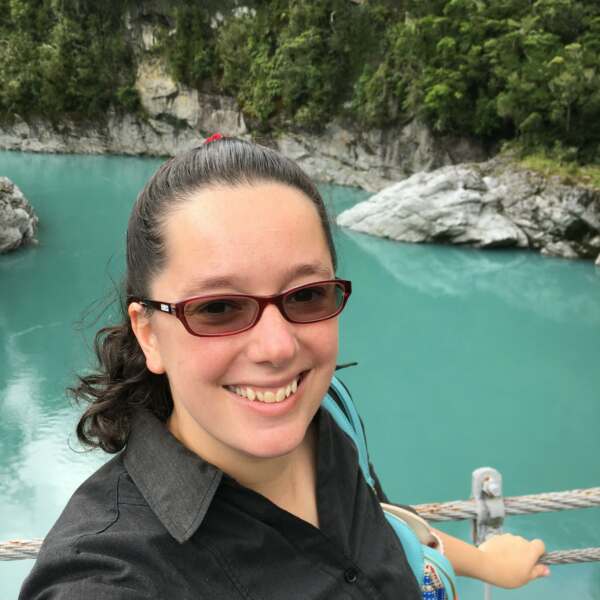Model Predictive Control (MPC) at Newcrest Mining
As an industry leader, Newcrest is called to meet the demand for quality products and increased yield, while managing raw material variability, commodity price fluctuations and rising sustainability pressures.
Tackling these challenges is difficult, but the objectives are clear-cut. Achieving a mere one percent improvement translates into substantial cost savings and natural resources conservation, driving both economic and environmental benefits.
Eric Nettleton, Head of Automation at Newcrest, noted that “with different DCS and technology systems throughout the business, the company required an open architecture Advanced Process Control (APC) platform to support its Automation strategy.” Ruchira De Silva, Manager for Process Control & Analytics, explained that to achieve this strategy, “Newcrest deployed a comprehensive, multi-year Process Control & Analytics (PC&A) upliftment program to underpin its APC work and drive greater efficiency and profitability from its operations.” The PC&A framework calls for internal capability development to be complemented by strategic external collaboration.
To that end, Newcrest partnered with the Kalypso industrial data science team to explore how Pavilion8® MPC technology could be deployed in its process plants to achieve key targets. The joint efforts of the Newcrest and Kalypso teams yielded improvements that not only met but often exceeded the set project targets.
The MPC Solution Delivered Benefits Across Multiple Sites, Exceeding Newcrest’s Set Project Targets

Increase in throughput in Cadia, New South Wales Australia
- Increase in stability of the SAG mill operation
- Improved downstream processing
Goal
Optimize grinding circuit for greater efficiency and throughput.
Challenge
Newcrest stakeholders at the Cadia facility in New South Wales, Australia were focused on increasing the stability of the overall process for recovering gold from ore; that is, they sought to decrease the variability in process conditions. By controlling variability and running the processing plant closer to operating constraints, Newcrest stakeholders expected they could increase both throughput and yield.
Approach
Newcrest asked Kalypso to increase throughput by optimizing the CON2 concentration circuit. The Kalypso MPC team studied 12 months of historical data from the circuit to identify the key process parameters that could be controlled and modified. The Pavilion8 controller was then used to predict how the process would respond to variability and outside disturbances and proactively adjust for desired results.
To maximize throughput, the Grinding Circuit has to be run as quickly and efficiently as possible against downstream constraints. This means grinding incoming ore down to properly sized particles in as few repetitions of the circuit as possible.
To ensure the right particle size of the material going into the flotation circuit, the Kalypso team configured the MPC grinding application to adapt to the variation of feed stock and other conditions. To control the density of the slurry in the SAG Mill, the MPC controller had to monitor and adjust multiple variables simultaneously, including SAG mill speed, the feed rate of ore into the SAG mill, and the flow rate of water into the SAG mill, among others.
Results
The MPC Grinding Circuit Application was designed, implemented and validated in nine months, before transitioning it to the Newcrest team for ongoing operation.
In the business case defined at project launch, Newcrest and Kalypso identified an agreed increase in throughput as the potential target. Post implementation, the Cadia CON2 Grinding Circuit under MPC is delivering well above this challenging target.
Following their success in optimizing the grinding circuit, Newcrest enlisted Kalypso's expertise once again for a subsequent project focused on optimizing the flotation circuit.
Jason Nitz, Manager Technology and Innovation at Cadia, indicated that “This project has given Cadia the confidence it needs to pursue additional process control improvement opportunities at the plant with the combined Kalypso/Rockwell capabilities.” Jason Cravino, Superintendent PC&A at Cadia, added that the “Collaboration between Kalypso and site PC&A, Metallurgy and Operations teams has been successful in implementing a control solution that not only stabilized the CON2 grinding circuit, but has also driven an uplift in production tons.”
Goal
Optimize grinding circuit for greater efficiency and throughput.
Challenge
Newcrest stakeholders at the Cadia facility in New South Wales, Australia were focused on increasing the stability of the overall process for recovering gold from ore; that is, they sought to decrease the variability in process conditions. By controlling variability and running the processing plant closer to operating constraints, Newcrest stakeholders expected they could increase both throughput and yield.
Approach
Newcrest asked Kalypso to increase throughput by optimizing the CON2 concentration circuit. The Kalypso MPC team studied 12 months of historical data from the circuit to identify the key process parameters that could be controlled and modified. The Pavilion8 controller was then used to predict how the process would respond to variability and outside disturbances and proactively adjust for desired results.
To maximize throughput, the Grinding Circuit has to be run as quickly and efficiently as possible against downstream constraints. This means grinding incoming ore down to properly sized particles in as few repetitions of the circuit as possible.
To ensure the right particle size of the material going into the flotation circuit, the Kalypso team configured the MPC grinding application to adapt to the variation of feed stock and other conditions. To control the density of the slurry in the SAG Mill, the MPC controller had to monitor and adjust multiple variables simultaneously, including SAG mill speed, the feed rate of ore into the SAG mill, and the flow rate of water into the SAG mill, among others.
Results
The MPC Grinding Circuit Application was designed, implemented and validated in nine months, before transitioning it to the Newcrest team for ongoing operation.
In the business case defined at project launch, Newcrest and Kalypso identified an agreed increase in throughput as the potential target. Post implementation, the Cadia CON2 Grinding Circuit under MPC is delivering well above this challenging target.
Following their success in optimizing the grinding circuit, Newcrest enlisted Kalypso's expertise once again for a subsequent project focused on optimizing the flotation circuit.
Jason Nitz, Manager Technology and Innovation at Cadia, indicated that “This project has given Cadia the confidence it needs to pursue additional process control improvement opportunities at the plant with the combined Kalypso/Rockwell capabilities.” Jason Cravino, Superintendent PC&A at Cadia, added that the “Collaboration between Kalypso and site PC&A, Metallurgy and Operations teams has been successful in implementing a control solution that not only stabilized the CON2 grinding circuit, but has also driven an uplift in production tons.”

Increase in gold recovery in Lihir Process Plant, Papua New Guinea
- Reduced variability in the final concentrate sulfur grade for the autoclaves
- Decrease in use of reagents
Goal
Optimize flotation circuits to increase gold recovery.
Challenge
Metals go through a multi-stage process to be separated from other compounds in the rocky ore. The ore is crushed and ground into smaller particles, separated by size, while being combined with water and chemical reagents to form a slurry. This slurry is fed into flotation tanks to be agitated with air bubbles that create a foam, or “froth” on the surface of the tank. The reagents induce the metal particles to adhere to the bubbles, so they can be skimmed off in a process of recovery and consolidated further for downstream processing.
Poor flotation operation can result in reduced recovery efficiency, low grade quality product, high input disturbances, increased use/cost of reagents and high variability within the process, making it more difficult to control and operate.
Approach
Newcrest stakeholders at Lihir wanted to optimize a flotation circuit for better gold recovery, concentrate grade and lower reagent costs. They asked Kalypso to develop a solution for multi-variable optimization of the flotation circuit, targeting a measurable increase in recovery as an indicator of success.
The flotation circuit solution development began with monitoring and controlling process parameters to reduce variability and achieve optimization targets. The application provides real-time visibility into process management and controls multiple process parameters simultaneously. Control actions are updated continuously based on actual process observations and Virtual Online Analyzers, while adhering to plant process constraints to meet recovery and grade requirements.
Pavilion8 controllers are based on powerful models of the process accounts for multiple variables that affect the process outcome. It acts at a high frequency for efficient and accurate calculation of controller setpoints and predicts internal process and quality parameters.
Disturbances in the flow rate and water balance that might be caused by upstream variables will impact the mass pull capacity of the flotation circuit.
Results
The MPC Flotation Circuit application was designed, implemented and validated over a span of 12 months, before being transitioned to the Newcrest team in Lihir for ongoing operation.
In the business case defined at project launch, Newcrest and Kalypso identified an increase in gold recovery (at flotation) as the potential stretch target. Post implementation, the Lihir Flotation Circuit under MPC is delivering well above this challenging target.
Robert Gordon, Process Plant Operations Manager, stated that “The implementation of MPC on the Lihir Flotation circuit has delivered significant performance improvement and downstream flowsheet stability. The Lihir Operations, Process Control and Metallurgical teams have worked collaboratively to co-design this MPC solution, building core capability to support our future expanded MPC program.”
Gareth Peachey, Senior Process Engineering Specialist at Lihir noted, “It was a new technology for Lihir designed to improve on existing regulatory controls and was implemented during Covid restrictions with limited access to resources. Our close collaboration with the Kalypso team enabled us to navigate through these challenges to deliver a successful project that exceeded the challenging performance goals we set.”
Goal
Optimize flotation circuits to increase gold recovery.
Challenge
Metals go through a multi-stage process to be separated from other compounds in the rocky ore. The ore is crushed and ground into smaller particles, separated by size, while being combined with water and chemical reagents to form a slurry. This slurry is fed into flotation tanks to be agitated with air bubbles that create a foam, or “froth” on the surface of the tank. The reagents induce the metal particles to adhere to the bubbles, so they can be skimmed off in a process of recovery and consolidated further for downstream processing.
Poor flotation operation can result in reduced recovery efficiency, low grade quality product, high input disturbances, increased use/cost of reagents and high variability within the process, making it more difficult to control and operate.
Approach
Newcrest stakeholders at Lihir wanted to optimize a flotation circuit for better gold recovery, concentrate grade and lower reagent costs. They asked Kalypso to develop a solution for multi-variable optimization of the flotation circuit, targeting a measurable increase in recovery as an indicator of success.
The flotation circuit solution development began with monitoring and controlling process parameters to reduce variability and achieve optimization targets. The application provides real-time visibility into process management and controls multiple process parameters simultaneously. Control actions are updated continuously based on actual process observations and Virtual Online Analyzers, while adhering to plant process constraints to meet recovery and grade requirements.
Pavilion8 controllers are based on powerful models of the process accounts for multiple variables that affect the process outcome. It acts at a high frequency for efficient and accurate calculation of controller setpoints and predicts internal process and quality parameters.
Disturbances in the flow rate and water balance that might be caused by upstream variables will impact the mass pull capacity of the flotation circuit.
Results
The MPC Flotation Circuit application was designed, implemented and validated over a span of 12 months, before being transitioned to the Newcrest team in Lihir for ongoing operation.
In the business case defined at project launch, Newcrest and Kalypso identified an increase in gold recovery (at flotation) as the potential stretch target. Post implementation, the Lihir Flotation Circuit under MPC is delivering well above this challenging target.
Robert Gordon, Process Plant Operations Manager, stated that “The implementation of MPC on the Lihir Flotation circuit has delivered significant performance improvement and downstream flowsheet stability. The Lihir Operations, Process Control and Metallurgical teams have worked collaboratively to co-design this MPC solution, building core capability to support our future expanded MPC program.”
Gareth Peachey, Senior Process Engineering Specialist at Lihir noted, “It was a new technology for Lihir designed to improve on existing regulatory controls and was implemented during Covid restrictions with limited access to resources. Our close collaboration with the Kalypso team enabled us to navigate through these challenges to deliver a successful project that exceeded the challenging performance goals we set.”
Newcrest Mining's investments in model predictive control have strategically positioned them to meet the growing demand for quality product and higher yields.
Our work together enabled Newcrest to enhance operational efficiency by managing costs, energy consumption, raw material variability and other constraints while staying true to their commitment to sustainability and environmental stewardship.



